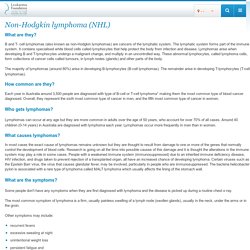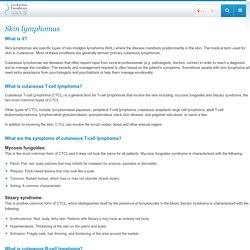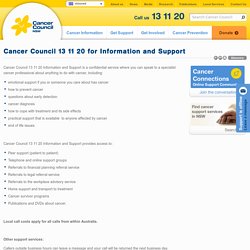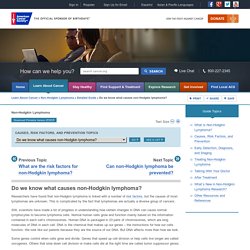

Non-Hodgkin lymphoma (NHL): Leukaemia Foundation. What are they?

B and T- cell lymphomas (also known as non-Hodgkin lymphomas) are cancers of the lymphatic system. The lymphatic system forms part of the immune system. It contains specialised white blood cells called lymphocytes that help protect the body from infection and disease. Lymphomas arise when developing B and T-lymphocytes undergo a malignant change, and multiply in an uncontrolled way. These abnormal lymphocytes, called lymphoma cells, form collections of cancer cells called tumours, in lymph nodes (glands) and other parts of the body.
The majority of lymphomas (around 80%) arise in developing B-lymphocytes (B-cell lymphomas). How common are they? Each year in Australia around 3,500 people are diagnosed with type of B-cell or T-cell lymphoma* making them the most common type of blood cancer diagnosed. Who gets lymphomas? Lymphomas can occur at any age but they are more common in adults over the age of 50 years, who account for over 70% of all cases. Skin lymphomas: Leukaemia Foundation. What is it?

Skin lymphomas are specific types of non-Hodgkin lymphoma (NHL) where the disease manifests predominantly in the skin. The medical term used for skin is ‘cutaneous’. Most of these conditions are generally termed ‘primary cutaneous lymphomas’. Cutaneous lymphomas are diseases that often require input from several professionals (e.g. pathologists, doctors, nurses) in order to reach a diagnosis and to manage the condition. The severity and management required is often based on the patient’s symptoms. Cancer Council 13 11 20 Information and Support. Cancer Council 13 11 20 Information and Support is a confidential service where you can speak to a specialist cancer professional about anything to do with cancer, including: emotional support if you or someone you care about has cancerhow to prevent cancerquestions about early detectioncancer diagnosishow to cope with treatment and its side effectspractical support that is available to anyone affected by cancerend of life issues.

Cancer Council 13 11 20 Information and Support provides access to: Peer support (patient to patient)Telephone and online support groupsReferrals to financial planning referral serviceReferrals to legal referral serviceReferrals to the workplace advisory serviceHome support and transport to treatmentCancer survivor programsPublications and DVDs about cancer. Local call costs apply for all calls from within Australia. Other support services: Callers outside business hours can leave a message and your call will be returned the next business day.
UC pub Non Hodgkin Lymphoma CAN718 lo res December 2015. CD markers. Below is a chart of the typical CD markers (cluster of differentiation) found on most lymphomas.

These are just one tool the pathologist uses to make a diagnosis. First is the chart for B-cell types of lymphoma. Below that is the chart for T-cell lymphomas. Click here for a chart of all CD markers and what they mean. B-cell CD markers T-cell CD markers Sources: Institute of Biomedical Science The Cancer network Cancer management Handbook H. Medscape (note: article valid only until November 2007) Mantle Cell Lymphoma: An Update for Clinicians CME) Non-Hodgkin's Lymphoma Cyberfamily. Risks and causes of non Hodgkin lymphoma. Non-Hodgkin's Lymphoma Causes, Symptoms, Diagnosis, Treatment - Diseases and Conditions - PDR Health.
WYNTK_NHL_Composite - non-hodgkin-lymphoma.pdf. How is non-Hodgkin lymphoma treated? This information represents the views of the doctors and nurses serving on the American Cancer Society’s Cancer Information Database Editorial Board.

These views are based on their interpretation of studies published in medical journals, as well as their own professional experience. The treatment information in this document is not official policy of the Society and is not intended as medical advice to replace the expertise and judgment of your cancer care team. It is intended to help you and your family make informed decisions, together with your doctor. Your doctor may have reasons for suggesting a treatment plan different from these general treatment options. Don’t hesitate to ask him or her questions about your treatment options. Do we know what causes non-Hodgkin lymphoma? Researchers have found that non-Hodgkin lymphoma is linked with a number of risk factors, but the causes of most lymphomas are unknown.

This is complicated by the fact that lymphomas are actually a diverse group of cancers. Still, scientists have made a lot of progress in understanding how certain changes in DNA can cause normal lymphocytes to become lymphoma cells. Normal human cells grow and function mainly based on the information contained in each cell’s chromosomes. Human DNA is packaged in 23 pairs of chromosomes, which are long molecules of DNA in each cell. DNA is the chemical that makes up our genes – the instructions for how our cells function. Some genes control when cells grow and divide. Each time a cell prepares to divide into 2 new cells, it must make a new copy of the DNA in its chromosomes. Some people inherit DNA mutations from a parent that increase their risk for some types of cancer. Scientists are learning much about the exact gene changes involved in lymphoma.